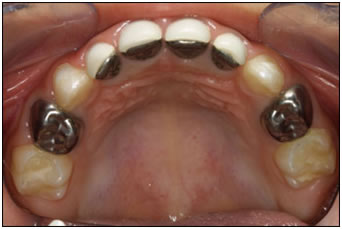Many times I see a patient who wants some aesthetic work done and we first try and see how they smile now. Quite often, I'm told "I don't smile." Young kids are great because they will smile no matter how their teeth look, but as they get older self-esteem, self-consciousness and other pressures set in.
This same adult who won't smile and has issues with their teeth may also be the one who asks "why are baby teeth important?" Fortunately, I don't seem to be getting this question as much now as I used to. I hope we do a good job at educating parents and this is helping. The question comes in many forms.
"Do we really need to do fillings? They are just baby teeth."
"Do we really need to fight about flossing and brushing? They are going to lose them anyway."
The answer is a resounding "YES!"
Baby teeth are just as important as your permanent teeth. In many ways, they are more important. The baby teeth do more than just help us chew until we get our full compliment of adult teeth. Teeth play a huge role in helping us speak. It's amazing how much a role your teeth play in speaking. Ask someone who has a denture about how switching from their own teeth to a set of false teeth made them feel like a different person. Imagine how much harder it can be to adapt while we are just learning how to speak.
The biggest worry I have from parents on a first visit is about braces. Braces are expensive and they want to know if their kid will need them. Most kids (and even us adults) could benefit from orthodontics. We can try and minimize the need and severity but allowing our childrens' jaws to grow to where they need to be to have space for the teeth they will get! This includes keeping the baby teeth in the mouth to prevent loss of space and eliminating or limiting other factors that hinder healthy growth such as thumb or finger sucking and pacifier use. Pacifiers have some important early on but past 6-12 months they should be completely eliminated from use. Our jaw sizes in general are shrinking in society. Our genetics are not really changing. Behaviors play a huge role in our growth.

The above picture was the first result I got on Google images searching for a child's smile. Do the same search yourself and you'll probably get a smile of your own. Children are developing their sense of self at an early age. We want them to have every chance to have great self worth. A healthy smile is happiness.
Baby teeth usually start coming in around 6 months of age. Shortly after that it is recommended to have a visit with a dentist or pediatric dentist. Typically, we love to have the first visit be a happy visit and get your child used to being at the dentist before there is an issue. Letting your child see what a dental chair looks like, pick out a tooth brush and get a sticker or two for doing such a good job is a lot easier than trying to do a filling on a scared two year old. In my office, we want that first visit to be successful and sometimes we are able to get a cleaning in but sometimes we aren't. We don't push your kid if we don't need to. This appointment is more about the parent or caregiver and making sure we get them the tools to keep that smile healthy.
When your child was born, they already had 20 teeth hiding below their gums. Their two front teeth (usually lower first, then upper) are the first ones to poke through. Back teeth tend to do most of the work with chewing, but forming our smile is what nature chose we needed first (much to the dismay of breast-feeding moms everywhere).
By two to two and a half years, we usually see a full set of 20 baby teeth. However, its the time the first one starts to poke through. Decay can start anytime sugar or acid comes in contact with tooth.
Here are some tips directly for the American Dental Association.
*Do not let your baby or toddler fall asleep with a bottle of sugary liquids (this includes juice!!)
*If your baby needs comfort between regular feedings or at bedtime, give him a clean pacifier. Never dip a pacifier in sugar or honey
*Do not put the pacifier in your mouth to clean it and then put it in the baby's mouth. You may pass on decay-causing bacteria to the baby.
*Do not allow children to frequently sip sugary liquids from bottles or training cups, since this can also lead to decay. Even watered-down sugary drinks, including juice, can damage teeth.
So what can your do to keep your child's mouth and teeth healthy?
*Wipe the baby's gums with a clean, web gauze or washcloth after feeding. Its great to get your child used to having you cleaning their mouth.
*As soon as that first tooth breaks through the gums, brush it two times a day. Morning and right before bed. As soon as there are two teeth that touch. Floss once a day. Until your child is six, they will need help with brushing and the dexterity to floss, that typically doesn't come until they are ten.
*Make sure your child is getting fluoridated water. Many cities and towns add fluoride to the water in the ideal concentration. Brentwood does not, but the water is naturally fluoridated pretty close to that level. If you child doesn't drink tap water, fluoridated bottled water is available.
*For children under three, use no more than a smear or grain of rice sized amount of fluoridated toothpaste. For children three and over, we can increase that amount to a pea sized drop.
*Make sure your child is eating a healthy diet.
*Ask your dentist questions.
Prevention is the best thing we have to keep the smile healthy. There are ways we can keep teeth in the mouth as long as they are designed to be there, but good habits, having sealants placed on permanent molars once those are erupted and regular dental visits are key to having a smile on your child like the one above and not the one below.










